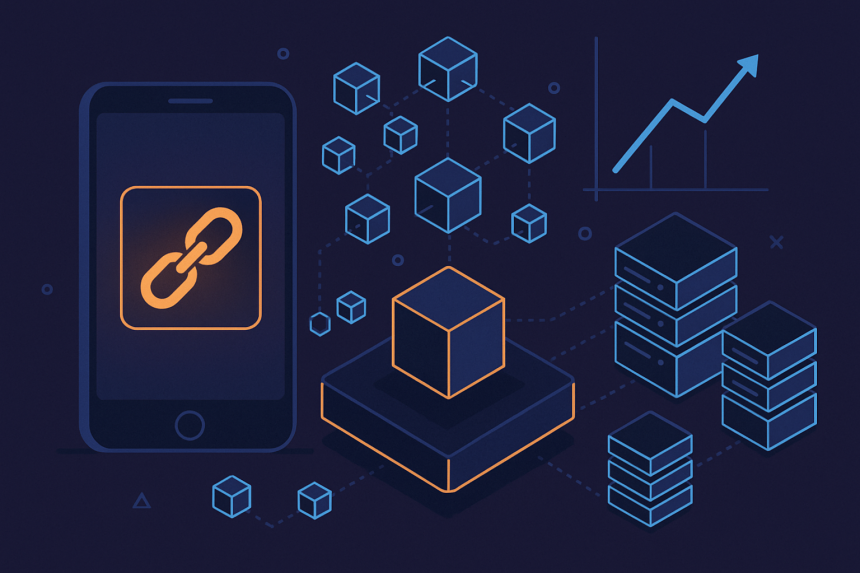Prototypes are easy to love. A blockchain app with a small user base looks neat: fast, stable, even elegant. But scale it up and the cracks appear fast. Most companies underestimate this stage.
This article is based on insights from Igor Izraylevych, CEO of S-PRO. His team has seen projects in finance, logistics, and tokenization stumble when moving from pilots to real-world use. The problems aren’t abstract — they’re painfully concrete.
01. Transaction Bottlenecks
Take Ethereum. A demo app running on testnet may handle a few hundred daily operations without issue. Push that same app into production with thousands of users, and gas fees spike while transactions queue for minutes.
Even alternatives like Polygon or Avalanche, which promise higher throughput, come with trade-offs. They lower fees and speed up confirmation times but rely on validator sets that can become centralized under heavy loads.
Igor explains it directly:
“Teams think if it runs on testnet, it’ll run in production. But scaling from 500 to 50,000 daily transactions is not linear. Suddenly your app depends on mempool congestion, block times, and fee markets.”
This is why experienced blockchain development companies stress early architecture choices. Switching chains mid-project is like rebuilding an airplane while it’s flying.
02. Data and State Growth
Another hidden limit is data bloat. Every transaction adds to the ledger. Public chains like Ethereum now exceed 1TB of historical data. Running a full node becomes costly, which narrows the number of participants who can validate the system.
Some projects use pruning, snapshots, or off-chain storage to cope. But each shortcut comes with risks: less decentralization, reliance on third-party APIs, or weaker audit trails.
03. Integration Nightmares
Scaling is also about connecting to the old world. A blockchain settlement system for banks may look fine in isolation, but it must still reconcile with SWIFT payments, internal ledgers, and compliance databases.
One European logistics pilot failed after six months because customs authorities demanded paper documentation alongside the blockchain records. The “digital only” workflow collapsed when faced with regulators who insisted on PDFs with stamps.
Igor sums it up:
“Legacy systems aren’t going away. If your blockchain doesn’t play well with Oracle or SAP, you’re dead on arrival.”
This is why proper product discovery services matter before writing code. Testing integration assumptions early can save millions later.
04. Cost Explosion
Pilots hide costs. Run ten nodes for a demo and nobody notices. Scale to hundreds of nodes across multiple regions with monitoring, failover, and security teams, and expenses skyrocket.
Public chains add another cost dimension: transaction fees. A decentralized exchange prototype might cost cents per trade. Put it into production during a busy market, and suddenly fees eat half the revenue.
Without serious financial modeling, the economics of scaling break projects more often than the code does.
05. Governance and Upgrades
At scale, governance is not optional. A tokenized real estate platform with 20 investors can operate informally. With 20,000 investors, every decision about upgrades, forks, or custody requires structure.
Igor points out:
“Smart contracts don’t manage themselves. Someone must decide when to patch a vulnerability, who has upgrade keys, and how disputes are resolved. Ignoring governance is why many projects stall.”
This is where DAOs, multi-signature wallets, and formal on-chain voting come into play. But these systems add legal uncertainty. Regulators may not accept that “token holders voted” as a valid legal decision.
06. Security at Scale
Attack surfaces grow with user adoption. Bridges, cross-chain protocols, and smart contract upgrades become prime targets. The $600M Ronin bridge hack is a reminder that scaling multiplies risks.
Even basic DApps face scaling-related exploits. A contract that works under low traffic can break under high concurrency, exposing reentrancy bugs or gas-limit vulnerabilities.
Signs of Survivors
Not every project fails. Those that survive scaling share patterns:
- Stress testing on day one. Simulating thousands of concurrent users instead of relying on small demos.
- Dedicated governance models. Not improvised Telegram votes, but structured frameworks.
- Integration budgets. Setting aside time and money for APIs, compliance checks, and audits.
- Long-term infrastructure plans. Including data pruning, archival strategies, and disaster recovery.
Scaling a blockchain app is less about hype and more about gritty details: block times, database syncs, API bottlenecks, even paperwork from regulators. The teams that survive aren’t always the flashiest — they’re the ones willing to deal with boring but essential problems. Scaling is where blockchain projects start being the infrastructure.
Lynn Martelli is an editor at Readability. She received her MFA in Creative Writing from Antioch University and has worked as an editor for over 10 years. Lynn has edited a wide variety of books, including fiction, non-fiction, memoirs, and more. In her free time, Lynn enjoys reading, writing, and spending time with her family and friends.















